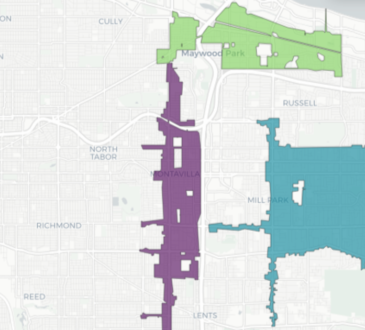
One of the most common assets that divorcing couples own is real property. In many cases, the real property is limited to the marital residence. However, some cases also involve either residential or commercial investment properties. In those “more complex” cases, it is important to understand how each investment property and the income it generates will be managed and ultimately distributed in a divorce in Arizona.
The first step for each investment property is to determine whether the ownership interest in the property is characterized as separate property or community property. Generally speaking (with some exceptions), if the ownership interest was acquired prior to marriage and is titled in the name of one spouse alone, that ownership interest is separate property, and if the ownership interest was acquired during the marriage or is jointly titled, the ownership interest is community property.
If the ownership interest is separate property, the analysis is usually straightforward. That property interest, and any income that it generates, should be awarded to the spouse who owns the interest. The “in spouse” should also be awarded sole management of the property interest, even if the parties historically jointly managed the property, and sole responsibility for meeting any owner-related obligations, such as paying expenses, even if the parties historically jointly paid those expenses. One important consideration is that if either spouse, as members of the community, made financial contributions or contributions of effort towards the property interest during the marriage, the community may be entitled to assert a monetary claim for compensation/reimbursement for that contribution. That monetary claim, which is usually asserted by the “out spouse”, is called a “community lien” and each spouse is usually entitled to 50% of the amount of the claim.
If the ownership interest is community property, the analysis becomes more involved. Generally speaking (with some exceptions), while the divorce case is pending, every aspect of the property is joint – net rental income should be shared, expenses should be shared, decisions must be made jointly, and neither party can sell or encumber the property without the other party’s approval. Those are the default rules (among others). However, either party can ask the Court to change those rules if it is fair and makes sense to do so. That’s where good lawyering and sound financial strategy comes into play. Where rental properties make up a significant portion of the community estate, it becomes even more important to come up with a strategy early on and preferably prior to initiating the case to achieve your goals as related to the rental properties and the income that they generate. The final distribution of community rental properties is all about feasibility, practicality, and the ability to make a deal with the other side. For example, if the community owns a large real estate portfolio, the final distribution may allocate specific, and sometimes unequal, portions of the portfolio to each spouse depending on the value and character of the investments and the anticipated post-divorce financial circumstances of the spouses. It is also possible that the Court will order the rental properties be sold and the proceeds distributed to the parties.




